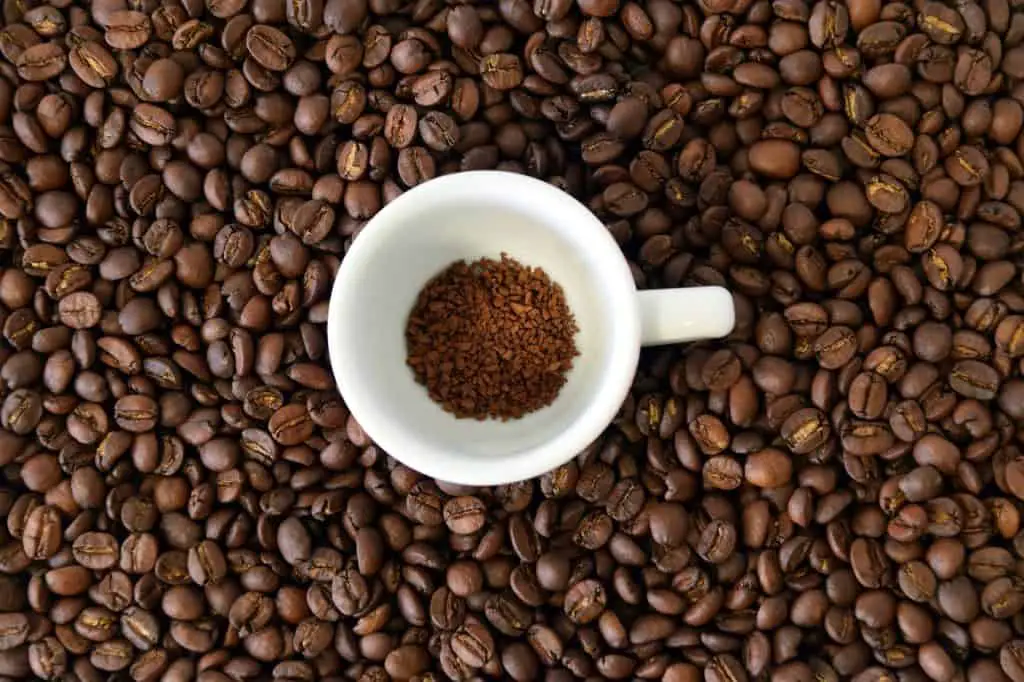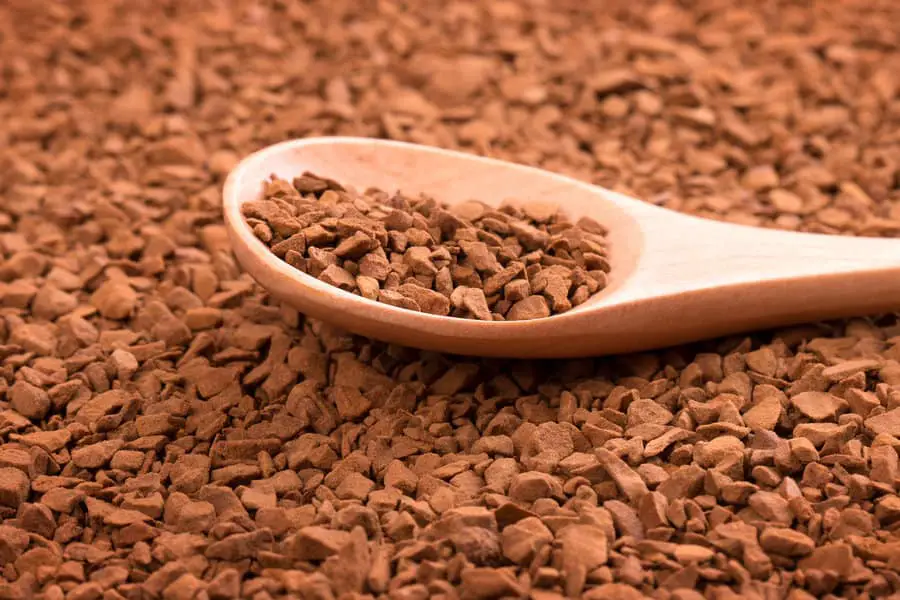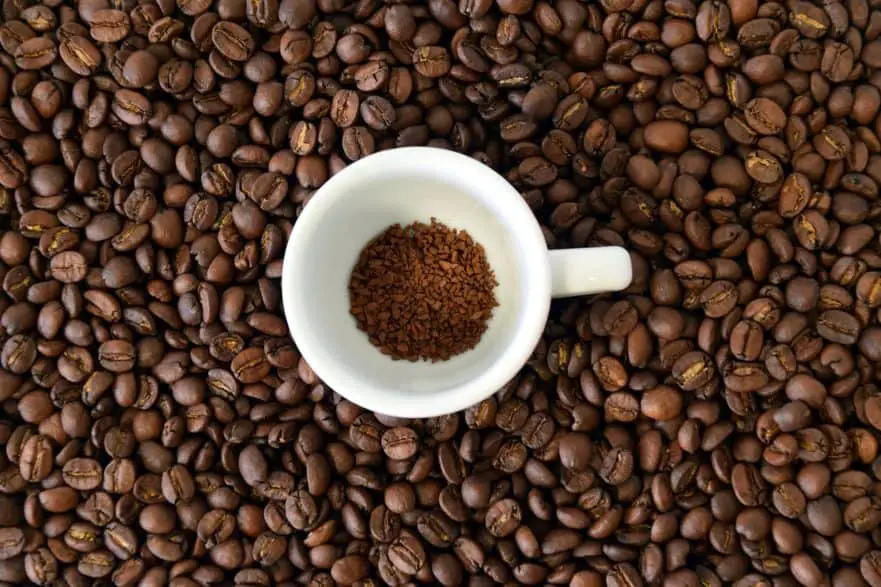
When you pour boiling water over those fine granules of instant coffee each morning, have you ever wondered how they came to be in that convenient form? While the traditional brewing method may seem straightforward, the process behind creating instant coffee is a whole different story. Prepare to be amazed as we unveil the secrets of how instant coffee is made!
Bean Selection and Roasting
When it comes to making instant coffee, two key aspects play a vital role in determining its flavor and quality. The first is the careful selection of beans, and the second is the precise roasting process.
Bean Selection: The journey of a delightful cup of instant coffee begins with the careful selection of premium coffee beans. Coffee connoisseurs and manufacturers alike understand that the choice of beans greatly impacts the taste and aroma of the final product. For instant coffee, beans are carefully chosen for their specific characteristics, including their origin, variety, and flavor profile.
Depending on the desired flavor profile, different types of beans are selected. Some may opt for beans with vibrant acidity, others for notes of chocolate or caramel, or maybe even a combination of both. Regardless, the selection process is meticulous, ensuring that only the finest beans make it into your instant coffee.
The Roasting Process: After the beans have been expertly chosen, they undergo the roasting process—the crucial step that further refines their characteristics. Roasting not only enhances the aroma and flavor but also determines the strength and body of the coffee.
The beans are carefully roasted at precise temperatures to bring out the desired flavors and remove any undesirable ones. Roasting times may vary depending on the desired taste profile, resulting in a spectrum of flavors ranging from light and bright to dark and bold.
“The careful selection of beans and the precise roasting process are essential for creating a flavorful and aromatic cup of instant coffee.”
To give you a better understanding, here’s a table that showcases the different roast levels and their corresponding flavor profiles:
| Roast Level | Appearance | Flavor Profile |
|---|---|---|
| Light Roast | Light brown with no oil | Delicate, floral, fruity |
| Medium Roast | Moderate brown with a slight sheen of oil | Balanced, smooth, nutty |
| Medium-Dark Roast | Rich, dark brown with oil | Full-bodied, chocolatey, slightly bitter |
| Dark Roast | Shiny black with abundant oil | Bold, smoky, intense |
As you can see, the roasting process significantly influences the flavor profile, allowing instant coffee manufacturers to craft a wide range of tastes to suit various preferences.
Now that we’ve explored the importance of bean selection and roasting, the next section will delve into the grinding and extraction process, where the flavors of the coffee are skillfully extracted to create the concentrated solution used in the production of instant coffee.
Grinding and Extraction
Once the coffee beans have been carefully roasted to perfection, the next crucial steps in creating instant coffee are grinding and extraction. These processes unlock the flavors and aromas trapped within the beans, resulting in a rich and concentrated coffee solution.
Grinding plays a vital role in maximizing the extraction of soluble coffee compounds. The beans are finely ground to increase the surface area, allowing for greater contact with water during extraction. This leads to a more flavorful and robust cup of instant coffee. There are various methods used for grinding coffee beans, including:
- Burr grinders
- Blade grinders
“The quality of the grinder greatly influences the final taste of the extract. Burr grinders are often preferred for their consistent particle size, which ensures uniform extraction and optimal flavor.”
Once the beans have been ground, it’s time for extraction. During this process, hot water is introduced to the coffee grounds, allowing it to dissolve the soluble compounds and extract the desired flavors. The extraction can be achieved through different methods, including:
- Drip brewing
- French press
- Espresso
The choice of extraction method greatly influences the characteristics of the instant coffee extract, such as its strength, body, and aroma. Factors like water temperature, brewing time, and grind size also contribute to the final result.
Freeze-Drying or Spray-Drying
When it comes to transforming the concentrated coffee extract into a dry, soluble powder, there are two main methods used – freeze-drying and spray-drying. Both methods have their own unique processes and characteristics that impact the final taste and convenience of instant coffee.
Freeze-Drying
Freeze-drying, also known as lyophilization, is a process that involves removing the water content from the concentrated coffee extract while preserving its flavor and aroma. Here’s how it works:
- The concentrated coffee extract is frozen to a very low temperature.
- The frozen coffee is then placed in a vacuum chamber, where the pressure is reduced.
- Gradually, the frozen water in the coffee sublimates, i.e., it turns from a solid directly into a gas, without passing through the liquid phase.
- The remaining dry coffee particles are collected and packaged.
Freeze-drying is a time-consuming and expensive process, but it yields instant coffee with a higher quality compared to other methods. The texture and flavor of freeze-dried instant coffee are often praised for being the closest to freshly brewed coffee. It also retains more of the volatile compounds responsible for the coffee’s aroma.
Spray-Drying
Spray-drying is a more common and cost-effective method used to produce instant coffee. Here is an overview of the spray-drying process:
- The concentrated coffee extract is sprayed as a fine mist into a hot chamber.
- The hot air quickly evaporates the water from the coffee particles, resulting in dried coffee powder.
- The remaining dry coffee particles are collected and packaged.
Spray-drying allows for faster production and is often used for mass production of instant coffee. While it may not produce the same level of flavor and aroma as freeze-drying, it is still a convenient and widely accessible method. The resulting instant coffee is typically coarser in texture and may have a slightly different flavor profile compared to freeze-dried instant coffee.
Both freeze-drying and spray-drying have their advantages and disadvantages. The choice between the two methods depends on factors such as cost, desired quality, and production scale. Now that we’ve explored the different methods of creating instant coffee, let’s move on to the next section and delve into the packaging and storage practices followed by manufacturers.

Packaging and Storage
When it comes to instant coffee, packaging and storage play a vital role in maintaining its freshness and flavor. Instant coffee manufacturers employ various packaging techniques to ensure that the product reaches consumers in the best possible condition.
One popular packaging method for instant coffee is vacuum-sealed jars or tins. These airtight containers help preserve the aroma and flavor of the coffee by preventing exposure to oxygen, moisture, and light. The vacuum-sealed packaging also extends the shelf life of instant coffee, allowing consumers to enjoy a cup of their favorite brew whenever they please.
Another commonly used packaging option is single-serve coffee sachets. These pre-portioned packets not only offer convenience but also help in maintaining the freshness of the coffee. Each sachet contains a measured amount of instant coffee, ensuring consistent flavor and reducing the risk of spoilage.
For those on the go, instant coffee is also available in stick packs or individual serving sizes. These compact and lightweight packages are ideal for travel or when you need a quick pick-me-up. The individually sealed packs provide the right amount of coffee for a single cup, making it easy to enjoy a flavorful brew anytime, anywhere.
Proper storage is equally important to preserve the quality and taste of instant coffee. It is advisable to store instant coffee in a cool, dry place away from direct sunlight. Exposure to heat, light, and moisture can negatively impact the flavor and overall quality of the coffee. To avoid clumping, it’s also essential to keep the container tightly sealed after each use.
Benefits of Proper Packaging and Storage:
- Preserves aroma and flavor
- Extends shelf life
- Ensures consistent taste
- Convenient for on-the-go consumption
By following proper packaging and storage practices, you can enhance your instant coffee experience and savor a delicious cup of coffee every time. So, whether you prefer vacuum-sealed jars, single-serve sachets, or stick packs, make sure to choose the right packaging and store your instant coffee properly for optimal freshness and flavor.
| Packaging Method | Advantages |
|---|---|
| Vacuum-Sealed Jars or Tins | Preserves aroma and flavor Extends shelf life |
| Single-Serve Coffee Sachets | Pre-portioned packets for consistent flavor Reduces the risk of spoilage |
| Stick Packs or Individual Serving Sizes | Compact and portable for on-the-go convenience Individually sealed for freshness |
Key Takeaways
- Instant coffee goes through a complex transformation from coffee beans to a dry, soluble powder.
- The selection of high-quality beans and careful roasting greatly influences the flavor profile of instant coffee.
- Grinding and extraction methods determine the strength and aroma of the concentrated coffee solution.
- Two main processes, freeze-drying and spray-drying, turn the coffee extract into powder form.
- Proper packaging and storage are essential for preserving the freshness and taste of instant coffee.
Final Thoughts
Instant coffee offers a convenient and quick solution for your daily caffeine fix. Throughout this article, we’ve explored the process involved in creating this beloved beverage.
From carefully selecting and roasting the beans to grinding, extracting, and transforming the concentrated coffee solution into a dry powder through freeze-drying or spray-drying, multiple steps are taken to achieve the instant coffee we know and love.
Proper packaging and storage play a vital role in preserving the aroma and flavor of instant coffee. By using various packaging techniques and ensuring optimal storage conditions, manufacturers make sure that your cup of instant coffee delivers the perfect taste every time.
So, the next time you enjoy a cup of instant coffee, remember the intricate process it has undergone to reach your morning routine. A testament to convenience and speed, instant coffee continues to be a favorite choice for coffee enthusiasts worldwide.

